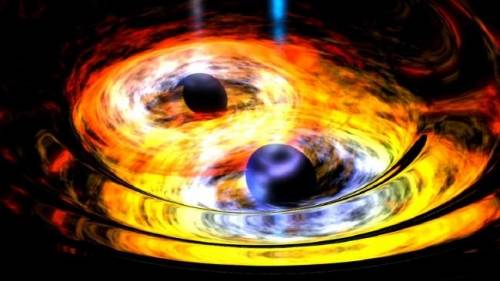 Close Topic Options
Close Topic OptionsSpecial & General Relativity
Special General Relativity - Sciences, Education, Art, Writing, UFO - Posted: 30th Jul, 2019 - 9:25pm
Special & General Relativity
Special and general relativity
Einstein's theory is divided into special and general relativity. Special relativity came first and is based on the speed of light being constant for everyone. That may seem simple enough, but it has far-reaching consequences. Einstein came to this conclusion in 1905 after experimental evidence showed that the speed of light didn't change as the Earth swung around the Sun.
Ref. Source 4b
Image from NASA.

Special & General Relativity (Hover)
Special & General Relativity UFO & Writing Art Education Sciences
You were right: Rotational motion is relative, too, Mr. Einstein!
It has been one hundred100 years since the publication of Einstein's general theory of relativity in May 1916. Physicists have now demonstrated that the rotational motion in the universe is also subject to the theory of relativity. Ref. Source 2i.
Relativity General and Special
How Einstein's theory of gravitation experienced a Renaissance after World War II. Einstein's 1915 theory of gravitation (General Relativity), is now considered one of the pillars of modern physics. It contributes to our understanding of cosmology and of fundamental interactions between particles. But that was not always the case. In a new article, historians of science and physicists share their views on the process, especially the 'Renaissance' of General Relativity, following progressive transformation of the theory into a bona fide physics theory. Source 9c.
Special & General Relativity
Einstein's general relativity theory is questioned but still stands for now. In the most comprehensive test of general relativity near the monstrous black hole at the center of our galaxy, researchers report that Einstein's theory of general relativity holds up, at least for now. Source 5i.
 TOPIC: Special & General Relativity
TOPIC: Special & General Relativity Einstein's theory
Einstein's theory